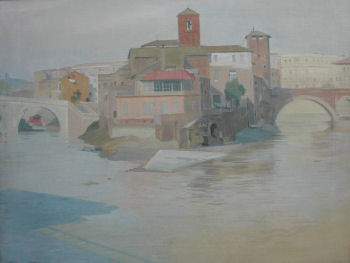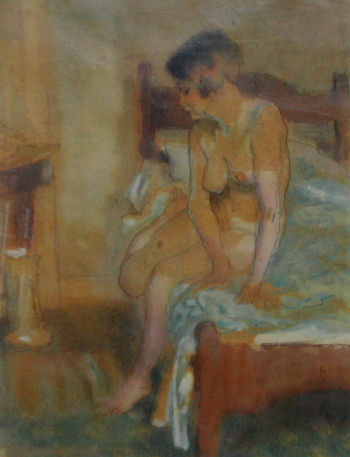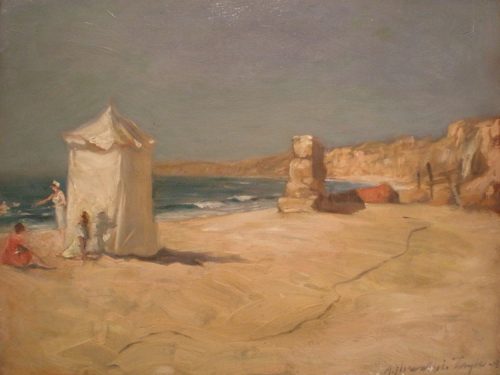Oil, 40x30cm.
Anthony Park R.O.I., R.B.A. 1880 – 1962
Park moved to St. Ives at the age of 18 and became probably the best known of the early St. Ives painters. He studied under Julian Olsson who encouraged him to study in Paris. From 1905 he attended the Atelier Colarossi where he was a contemporary of Modigliani. Strongly influenced by the French Impressionists, Park’s work is always brightly coloured and spontaneous.
He had worked in the cotton mills of his native Lancashire throughout much of his childhood. Although he had no official training during his first years painting in St. Ives, Park was fortunate enough to meet Julius Olsson, one of the earliest arrivals among the many painters who had settled in St. Ives towards the end of the nineteenth century. Olsson was the founder of the new School of Landscape and Marine Painting which he had set up in his own studio overlooking Porthmeor Beach.
He offered Park free tuition on account of his willingness to learn and natural ability and within six years of arriving in St. Ives, Park had begun exhibiting at the Royal Academy and it was at this time, with Olsson’s guidance, that he decided to continue his training in the ateliers of Paris.
Returning to St. Ives in 1923, Park found the old fishing port provided him with countless subjects among the many boats coming and going in the busy harbour and the overlapping forms of the fisherman’s cottages rising steeply on the hill overlooking the port. Park exhibited at the Royal Academy from 1905 to 1949 and he was elected as a member of the Royal Society of Oil Painters in 1923. He was a founder member of the St. Ives Society of Artists in 1927. With regular entries to the Paris Salon he was awarded the Gold Medal in 1934. Park was among a small group of professional artists who carried on the tradition of St. Ives painting in the quiet years between the wars.
He exhibited costal and fishing scenes at the Royal Academy, the Paris Salon and St. Ives Society of Artists. His work is held in the public collections of Manchester City Art, Salford Art Gallery and the Tate.






